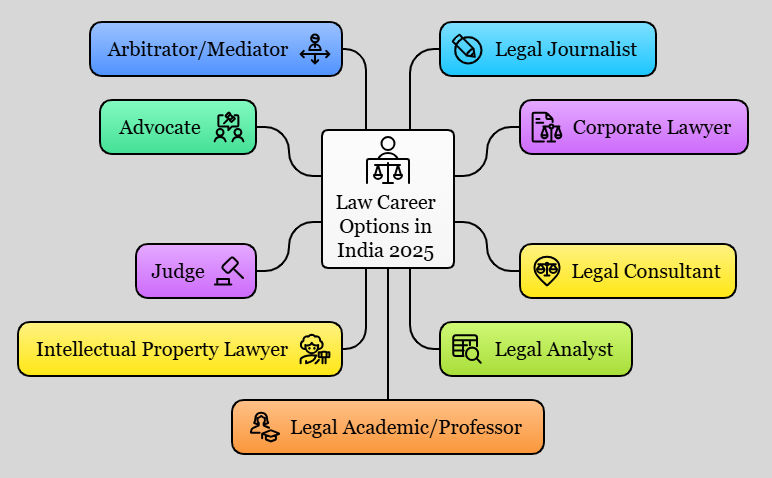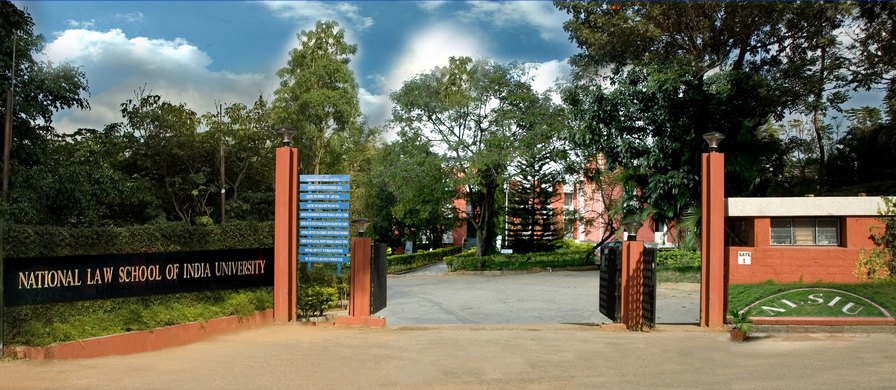CLAT Full Form: Your Gateway to India’s Top Law Universities
Ever wondered what CLAT stands for and why it’s the most talked-about exam among aspiring lawyers? You’re not alone. Every year, over 60,000 students search for “CLAT full form” as their first step toward a prestigious legal career.
CLAT Full Form: Common Law Admission Test – the single entrance examination that opens doors to 22 National Law Universities across India, including NLSIU Bangalore, NALSAR Hyderabad, and NLIU Bhopal.
In the next 10 minutes, you’ll discover everything about CLAT – from its complete meaning to exam structure, eligibility, preparation strategies, and how it shapes your legal career. Whether you’re in class 10 planning ahead or class 12 preparing intensively, this guide is your complete roadmap.

CLAT stands for Common Law Admission Test – India’s gateway to 22 premier National Law Universities.
Understanding CLAT: The Foundation of Legal Education in India
What Makes CLAT Unique?
The CLAT full form – Common Law Admission Test – represents more than just an acronym. Established in 2008, CLAT revolutionized legal education admission in India by creating a unified, transparent, and merit-based selection process for National Law Universities (NLUs).
Before CLAT, each law university conducted separate entrance exams, creating confusion and financial burden for students. The Consortium of NLUs introduced CLAT to streamline admissions, ensuring equal opportunity for every aspiring legal professional across the country.
National Law School of India University Bangalore – one of the premier NLUs accessible through CLAT examination.
The CLAT Ecosystem
Today, CLAT is administered by one of the 22 participating NLUs on a rotational basis. For 2025, the conducting university organizes the exam. The test evaluates:
- Critical thinking – analyzing legal scenarios and current affairs
- Logical reasoning – solving complex problems systematically
- Reading comprehension – understanding dense legal and academic texts
- Quantitative aptitude – basic mathematical problem-solving
- Legal reasoning – applying legal principles to factual situations
Why CLAT Matters in 2025
With the legal profession expanding into corporate law, intellectual property, cyber law, environmental law, and international arbitration, a degree from an NLU has never been more valuable. CLAT scores determine admission to both 5-year integrated B.A. LL.B (Hons.) programs and 1-year LL.M programs.
Quick Facts:
- 📊 Average candidates: 60,000+ per year
- 🎓 Seats available: ~2,500 across 22 NLUs
- 📈 Competition ratio: Approximately 24:1
- ⏱️ Exam duration: 2 hours
- ❓ Total questions: 120 (150 marks)
Breaking Down CLAT: Letter by Letter Analysis
The Problem: Confusion Around Law Entrance Exams
Many students confuse CLAT with other law entrance tests like AILET, LSAT India, or state-level exams. Understanding the CLAT full form and what each component means is crucial for making informed decisions about your legal education journey.

Understanding CLAT among various law entrance exams helps students make informed choices for legal education.
C – Common
“Common” signifies that this is a unified entrance examination accepted by all 22 National Law Universities simultaneously. Unlike fragmented admission processes, CLAT’s “common” nature means:
- One application for 22 universities
- Single exam date and pattern
- Standardized evaluation criteria
- Centralized counseling process
- Cost-effective for students (no multiple exam fees)
L – Law
“Law” explicitly defines the domain – this is exclusively for legal education admission. The exam tests not just academic knowledge but legal aptitude, including:
- Understanding constitutional principles
- Analyzing landmark judgments
- Applying legal maxims to scenarios
- Current legal and policy developments
A – Admission
“Admission” clarifies the purpose – CLAT is a gateway examination. Your score determines:
- Which NLU you qualify for
- Your ranking in counseling
- Scholarship eligibility
- Access to specialized programs
T – Test
“Test” indicates the assessment format – a comprehensive, objective examination conducted online. The test structure includes:
- 120 multiple-choice questions
- Negative marking (-0.25 for wrong answers)
- Passage-based question format (introduced in 2020 reform)
- Time limit: 2 hours (1 minute per question average)
📖 Real Example: Understanding Through Comparison
| Aspect | CLAT (Common Law Admission Test) | AILET (All India Law Entrance Test) |
|---|---|---|
| Scope | 22 National Law Universities | Only NLU Delhi |
| Conducting Body | Consortium of NLUs (rotational) | NLU Delhi |
| Application | Single form for all NLUs | Separate application |
🎯 Actionable Takeaway
Remember this: CLAT full form (Common Law Admission Test) isn’t just a name – each word defines a critical aspect of your law admission journey. Understanding this helps you approach preparation strategically and make informed college choices.
CLAT Exam Pattern: What the Test Actually Measures
The Challenge: Understanding What CLAT Really Tests
Knowing the CLAT full form is step one. Step two is understanding what skills and knowledge areas this Common Law Admission Test evaluates. Many students mistakenly think CLAT is only about legal knowledge – but the reality is more nuanced.

CLAT tests comprehensive skills through passage-based questions covering five key sections.
The 2020 Pattern Revolution
In 2020, CLAT underwent a significant transformation. The exam shifted from traditional GK and static reasoning to a comprehension-based, analytical format.
Current CLAT UG Exam Pattern (2025)
1. English Language (28-32 questions | ~22-26%)
- Passages from contemporary and classical fiction
- Tests: grammar, vocabulary, inference, tone, theme
- Skill focus: Reading comprehension at college level
2. Current Affairs & General Knowledge (35-39 questions | ~29-32%)
- Passages about recent events, developments, discoveries
- Tests: awareness of national and international significance
- Skill focus: Staying informed about contemporary world
3. Legal Reasoning (35-39 questions | ~29-32%)
- Passages describing legal principles, situations, or cases
- Tests: application of principles to fact patterns
- Skill focus: Legal aptitude and logical application
4. Logical Reasoning (28-32 questions | ~22-26%)
- Short passages with arguments, inferences, conclusions
- Tests: critical thinking, pattern recognition, deduction
- Skill focus: Analytical and logical problem-solving
5. Quantitative Techniques (13-17 questions | ~10-14%)
- Short passages with numerical information
- Tests: basic mathematics (10th standard level)
- Skill focus: Data interpretation and calculation
📖 Real Example: Sample Question Approach
Passage Type: Legal Reasoning
“The principle of res judicata prevents courts from reopening matters already decided. Section 11 of the CPC states that no court shall try any suit in which the matter in issue has been directly and substantially decided in a former suit between the same parties…”
Question: A files a suit for recovery of ₹50,000 against B. The suit is dismissed. A then files another suit for the same ₹50,000 against B. Can this second suit be tried?
What CLAT tests here: Not memorization of Section 11 CPC, but your ability to read, understand, and apply the principle to a new situation.
🎯 Actionable Takeaway
CLAT (Common Law Admission Test) isn’t about cramming facts. Focus on developing three core skills: rapid reading (aim for 400+ words/minute), analytical thinking (practice passage-based reasoning daily), and staying current (read quality newspapers for 30 minutes daily).
Who Can Take CLAT? Eligibility Criteria Explained
The Critical Question: Am I Eligible?
Understanding the CLAT full form and exam pattern is important, but knowing whether you qualify for the Common Law Admission Test is equally crucial. Let’s break down the eligibility requirements clearly.
CLAT UG Eligibility (For 5-Year B.A. LL.B Programs)
Academic Qualification
- Class 12 completion: Must have passed or appearing in Senior Secondary (10+2) examination
- Minimum percentage:
- General/OBC/PWD/NRI/PIO/OCI: 45% aggregate
- SC/ST candidates: 40% aggregate
- Stream flexibility: Any stream (Science, Commerce, Arts/Humanities) eligible
Age Limit
- General category: No upper age limit (as of 2022 revision)
- Note: Previous 20-year limit for General and 22 for SC/ST removed
Number of Attempts
- Unlimited attempts: You can take CLAT multiple times
- Strategy tip: Many successful candidates attempt CLAT in both Class 11 (practice) and Class 12 (serious attempt)
The Application Journey: Step-by-Step
Step 1: Registration (Mid-January)
Visit the official CLAT website (consortiumofnlus.ac.in). Create account with email and phone. Receive login credentials.
Step 2: Fill Application Form
- Personal details (name, DOB, contact)
- Academic information (10th, 12th marks)
- Category declaration (General/SC/ST/OBC/PWD)
- Preferred exam city (choose 3-4 options)
Step 3: Upload Documents
- Recent passport-size photograph (JPEG, max 100 KB)
- Signature (JPEG, max 100 KB)
- Class 10 certificate (for age proof)
- Category certificate (if applicable)
Step 4: Fee Payment
| Category | Fee Amount |
|---|---|
| General/OBC | ₹4,000 |
| SC/ST/BPL | ₹3,500 |
Payment modes: Credit/Debit Card, Net Banking, UPI
Step 5: Confirmation
Download and save confirmation page. Print admit card (released 2-3 weeks before exam).
⚠️ Common Mistakes to Avoid
- Uploading wrong photo/signature format or size
- Entering incorrect date of birth (must match Class 10 certificate)
- Selecting only one exam city (always choose 3-4 for flexibility)
- Missing application deadline (no extensions given)
- Not saving application number and password securely
🎯 Actionable Takeaway
Set reminders for CLAT application dates in December. Prepare documents early: get high-quality scanned copies of photograph, signature, and certificates ready by January 1st. Apply in the first week to avoid last-minute server issues.
Mastering CLAT: Strategic Preparation Roadmap
The Real Challenge: Balancing Board Exams and CLAT
Now that you know the CLAT full form (Common Law Admission Test), eligibility, and pattern, the biggest question arises: How do I prepare effectively? Most students struggle with balancing Class 12 board preparation with CLAT – here’s your strategic solution.

Strategic CLAT preparation requires the right resources, consistent daily practice, and effective time management.
Preparation Timeline: 12-Month Blueprint
Phase 1: Foundation Building (Months 1-4 | Class 11 April-July)
Goal: Understand basics and build reading habit
- English: Read 2-3 novels, practice grammar exercises (1 hour daily)
- Current Affairs: Start newspaper reading habit (The Hindu/Indian Express, 30 min daily)
- Legal Reasoning: Understand basic legal concepts through introductory books
- Logical Reasoning: Practice analytical reasoning puzzles (30 min daily)
- Quantitative: Revise Class 9-10 mathematics concepts
Weekly target: 15-20 hours focused study
Phase 2: Skill Development (Months 5-8 | Class 11 Aug-Nov)
Goal: Master passage-based question solving
- Practice strategy: Solve 20-30 passage-based questions daily
- Speed reading: Aim for 350-400 words per minute with 80% comprehension
- Current Affairs compilation: Maintain monthly current affairs notes
- Mock tests: Take one full-length mock every 2 weeks
- Analysis: Spend 2 hours analyzing each mock test
Weekly target: 20-25 hours focused study
Phase 3: Intensive Preparation (Months 9-10 | Class 12 Dec-Jan)
Goal: Achieve exam-level accuracy and speed
- Mock test frequency: 2-3 full-length tests per week
- Section-wise perfection: Identify weak areas and target improvement
- Time management drills: Practice completing 120 questions in 110 minutes (leaving 10 min buffer)
- Previous year papers: Solve last 5 years’ CLAT papers
- Current affairs revision: Complete revision of past 12 months
Weekly target: 25-30 hours focused study
Phase 4: Final Sprint (Months 11-12 | Class 12 Feb-May)
Goal: Peak performance and board exam balance
- February-March: Reduce CLAT to 10-15 hours/week (focus on boards)
- April-May: After boards, intensify to 35-40 hours/week
- Mock tests: Daily full-length tests in final 3 weeks
- Revision strategy: Focus on formula sheets, legal principle notes, current affairs compilation
- No new topics: Only revise and practice what you’ve learned
Subject-Wise Preparation Strategies
| Subject | Daily Practice | Weekly Practice | Key Resources |
|---|---|---|---|
| English Language | Read 10-15 pages of quality literature | Solve 50-60 passage-based comprehension questions | Word Power Made Easy, quality newspapers |
| Current Affairs | Read newspaper + watch news analysis (45 min) | Compile 10-15 major national/international events | The Hindu, Indian Express, PRS India |
| Legal Reasoning | Study 2-3 legal principles + apply to fact patterns | Solve 70-80 legal reasoning questions | Universal’s Legal Reasoning, landmark judgments |
| Logical Reasoning | Solve 15-20 varied logical reasoning questions | Practice all LR types: critical, analytical, syllogisms | A Modern Approach to Logical Reasoning (R.S. Aggarwal) |
| Quantitative Techniques | Solve 10-15 numerical problems (20 minutes max) | Revise formulas and solve 70-80 questions | NCERT Class 10 Math, shortcuts and tricks |
📖 Success Story: Strategic Preparation in Action
Student Profile: Ananya, CLAT 2024, AIR 47, NALSAR Hyderabad
“I started preparation in Class 11 summer. My strategy was simple: consistency over intensity. I read the newspaper every morning without fail – this single habit improved both my English and Current Affairs simultaneously. For Legal and Logical Reasoning, I solved 30 questions daily, even when I had school tests. During board exams, I reduced CLAT prep to just newspaper reading and 10 questions daily. After boards, I took 40+ mock tests in 6 weeks. The key was never stopping completely.”
What worked: Daily habit formation, consistency, post-board intensive push
🎯 Actionable Takeaway
Start today with these three non-negotiables: (1) Subscribe to a quality newspaper and read it daily – no excuses. (2) Solve at least 20 passage-based questions every single day. (3) Take your first full-length CLAT mock test this week to understand your baseline. Excellence in CLAT comes from daily discipline, not last-minute cramming.
Life After CLAT: Career Opportunities and Growth Paths
Beyond the Exam: Why CLAT Matters for Your Future
Understanding the CLAT full form – Common Law Admission Test – is just the beginning. The real value lies in what this exam unlocks: access to India’s premier legal education and diverse career pathways that go far beyond traditional courtroom practice.

CLAT opens doors to diverse legal career paths in India with competitive salaries and growth opportunities.
The NLU Advantage: What Makes These Institutions Special?
Cracking CLAT and securing admission to a National Law University offers:
- Integrated curriculum: 5-year B.A. LL.B combining liberal arts with legal education
- Industry exposure: Internships with Supreme Court judges, top law firms, corporations
- Global opportunities: Exchange programs with Harvard, Oxford, Yale
- Network effect: Alumni in judiciary, corporate leadership, policy-making
- Placement record: Starting salaries ₹10-25 lakh per annum in corporate law
Career Pathways: 10 Diverse Directions
1. Corporate Law (Most Popular)
- Role: Advising companies on legal compliance, mergers, contracts
- Top recruiters: Khaitan & Co, Cyril Amarchand Mangaldas, AZB & Partners
- Salary range: ₹15-30 lakh per annum (freshers from top NLUs)
- Growth: Can reach ₹1-2 crore as partner
2. Litigation (Traditional Path)
- Role: Representing clients in courts (civil, criminal, constitutional cases)
- Practice areas: Supreme Court, High Courts, trial courts, tribunals
- Income: Variable, depends on cases and reputation (₹5 lakh to ₹50+ lakh)
- Timeline: Takes 5-7 years to establish independent practice
3. Judicial Services
- Role: Becoming a judge in subordinate courts
- Entry: Through state judicial service examinations
- Salary: ₹77,840 to ₹2,25,000 (as per 7th Pay Commission)
- Growth: Can reach High Court or Supreme Court
4. Corporate In-House Counsel
- Role: Legal advisor within a corporation
- Top employers: Reliance, TCS, Infosys, HDFC, Amazon India
- Salary: ₹8-18 lakh per annum (freshers), ₹30-60 lakh (experienced)
- Work-life balance: Better than law firm practice
5. Civil Services (IAS/IPS/IFS through UPSC)
- Advantage: Law degree provides edge in Essay, Ethics, and Optional subjects
- Many NLU graduates: Successfully clear UPSC after graduation
- Dual preparation: Can prepare for judiciary + UPSC simultaneously
💰 Average Salary Comparison (2024-25 Data)
| NLU Tier | Average Package | Highest Package |
|---|---|---|
| Top 5 NLUs (NLSIU, NALSAR, NLIU, NUJS, NLUD) | ₹16-20 lakh per annum | ₹25-30 lakh per annum |
| Next 7 NLUs | ₹10-14 lakh per annum | ₹18-22 lakh per annum |
| Remaining NLUs | ₹6-10 lakh per annum | ₹12-16 lakh per annum |
🎯 Actionable Takeaway
Start exploring now: Don’t wait until graduation to think about career paths. During your CLAT preparation, follow 3-5 legal professionals on LinkedIn from different career tracks. Read about their journey. Intern during college summers to experience different legal fields. Your CLAT score opens doors – but your curiosity and exploration determine which door you walk through.
Advanced CLAT Strategies: From Good to Exceptional
Taking Your Preparation to the Next Level
You understand the CLAT full form (Common Law Admission Test), exam pattern, and basic preparation strategy. Now, let’s explore advanced techniques that separate top 100 rankers from the rest.

Advanced CLAT preparation techniques focus on integrated learning and deep analysis rather than volume.
Advanced Technique 1: The Integrated Reading Method
The Problem: Most students read newspapers, novels, and legal materials separately – wasting time and missing connections.
The Solution: Integrate all reading materials to serve multiple CLAT sections simultaneously.
❌ Before: Fragmented Approach
- 30 min newspaper for Current Affairs
- 30 min novel reading for English
- 30 min legal principles for Legal Reasoning
- Total time: 90 minutes, zero overlap
✅ After: Integrated Approach
- Read newspaper editorial on legal/policy issues (covers Current Affairs + English + Legal context)
- Read legal thrillers/judgment-based books (covers English + Legal Reasoning)
- Watch court proceeding videos with transcripts (covers all three)
- Total time: 60 minutes, triple overlap
Advanced Technique 2: Mock Test Analysis Framework
The Problem: Students take 50+ mocks but don’t improve because they don’t analyze deeply.
The Solution: Use the “5-Layer Analysis Method”
- Layer 1 – Score Analysis: What’s your percentile? Section-wise breakdown?
- Layer 2 – Time Analysis: Which sections took too long? Where did you rush?
- Layer 3 – Error Analysis: Silly mistakes vs conceptual gaps vs passage misunderstanding?
- Layer 4 – Strategy Analysis: Did you attempt in optimal order? Skip difficult questions appropriately?
- Layer 5 – Pattern Analysis: Comparing last 5 mocks – is there consistent weakness?
Result: This 30-minute analysis is more valuable than taking another mock test blindly.
🎯 Actionable Takeaway
Implement one advanced technique this week: After your next mock test, spend 45 minutes doing the 5-Layer Analysis. Create a spreadsheet tracking your performance across mocks. Identify your top 3 recurring mistakes. Dedicate next week specifically to eliminating just those 3 error patterns. Advanced preparation isn’t about doing more – it’s about doing better.
Your 7-Day CLAT Kickstart Plan
From Information to Action
You now understand the CLAT full form (Common Law Admission Test) and everything about the exam. Here’s your concrete 7-day plan to begin your CLAT journey TODAY.
📋 7-Day Implementation Checklist
Day 1: Assessment & Setup
- Take one free CLAT diagnostic test online
- Analyze your baseline score – identify strongest and weakest sections
- Subscribe to one quality newspaper (The Hindu or Indian Express)
- Download CLAT syllabus PDF from Consortium website
Day 2: Resource Gathering
- Visit local bookstore or order online: Word Power Made Easy, Legal Reasoning book, Logical Reasoning book
- Create dedicated CLAT study folder (physical + digital)
- Join 2-3 CLAT preparation groups on Telegram/Discord
- Create a study timetable template (adjust as you go)
Day 3: Habit Formation
- Read newspaper for 30 minutes – note down 5 important events
- Read 10 pages of any novel – focus on understanding context
- Solve 10 logical reasoning questions from your book
- Watch one CLAT topper interview on YouTube
Day 4: English Foundation
- Read newspaper (30 min) + identify 10 new vocabulary words
- Solve 2 comprehension passages (15 questions total)
- Practice grammar exercises (20 questions)
- Write one-paragraph summary of what you read
Day 5: Legal Reasoning Introduction
- Read newspaper (30 min)
- Study 3 basic legal principles (e.g., tort, contract basics)
- Solve 15-20 legal reasoning questions applying those principles
- Read about one landmark Supreme Court judgment (simplified version)
Day 6: Logical & Quantitative
- Read newspaper (30 min)
- Solve 20 logical reasoning questions (varied types)
- Revise Class 10 math: percentage, ratio, averages (solve 15 problems)
- Time yourself – aim for 1 minute per question average
Day 7: Review & Planning
- Take another diagnostic test – compare with Day 1 score
- Review what worked well this week, what didn’t
- Create a realistic 3-month study plan using the timeline from this guide
- Decide: self-study or coaching? (Consider Lawgic for structured guidance)
- Set specific goals: target rank, target NLU
Essential Tools & Resources Kit
📚 Books (Core 5)
- Word Power Made Easy – Norman Lewis
- Universal’s Guide to CLAT & LL.B Entrance Examination
- A Modern Approach to Logical Reasoning – R.S. Aggarwal
- Legal Awareness and Legal Reasoning – A.P. Bhardwaj
- NCERT Class 10 Mathematics (free PDF online)
🌐 Online Resources (Free)
- Consortium of NLUs official website – for notifications, syllabus
- Live Law – for legal current affairs
- PRS India – for policy and legislative updates
- YouTube channels: Career Launcher Law, LegalEdge CLAT
💡 Coaching Support
- Lawgic Coaching – Structured classroom/online programs, expert faculty, comprehensive mock tests, personalized mentorship, proven track record with top NLU admissions
🎯 Actionable Takeaway
Start NOW: Don’t wait for Monday or next month. Complete Day 1 tasks TODAY. Take that diagnostic test tonight. Subscribe to the newspaper tomorrow morning. Forward momentum matters more than perfect timing. Your CLAT journey begins the moment you take the first action.
Your CLAT Journey Starts Now
Let’s revisit where we started: CLAT Full Form – Common Law Admission Test. But now you know it’s far more than just an acronym.
CLAT represents:
- ✅ Your gateway to 22 premier National Law Universities
- ✅ A comprehensive test of reading, reasoning, and analytical abilities
- ✅ The foundation for diverse legal careers – from corporate law to judiciary
- ✅ An achievable goal with structured preparation and consistent effort
- ✅ A life-changing examination that opens doors to impactful legal careers

Success in CLAT opens doors to premier National Law Universities and transformative career opportunities.
Key Takeaways Summary
- CLAT Full Form: Common Law Admission Test – unified entrance for NLUs
- Eligibility: Class 12 with 45% (General) or 40% (SC/ST), any stream
- Pattern: 120 questions, 2 hours, passage-based format across 5 sections
- Preparation: 12-month timeline, daily reading habit, consistent practice
- Career scope: 10+ diverse pathways with competitive salaries
Your Next Three Actions
1. Take Immediate Action (Today)
Complete the Day 1 tasks from the 7-Day Kickstart Plan. Take a diagnostic test, subscribe to a newspaper, download the official syllabus.
2. Get Expert Guidance (This Week)
CLAT preparation is challenging, but you don’t have to do it alone. Join Lawgic Coaching – offering comprehensive CLAT preparation with:
- 🎓 Expert faculty with proven track records
- 📝 Extensive test series with detailed analysis
- 📚 Complete study material aligned with latest pattern
- 👥 Peer learning environment with motivated aspirants
- 🎯 Personalized mentorship and doubt-clearing sessions
Visit www.lawgiccoaching.com and book your free counseling session today. Get expert insights on your preparation strategy and how Lawgic can help you achieve your target NLU.
3. Build Your Support System (This Month)
Join CLAT aspirant communities, follow successful alumni, connect with current NLU students. Surround yourself with people who share your goal.
Remember This
“The Common Law Admission Test is not about being the smartest person in the room – it’s about being the most prepared, most consistent, and most determined. Your CLAT score is a direct reflection of your daily choices. Choose wisely. Choose consistently. Choose to start today.”
Your legal career begins with understanding the CLAT full form. It flourishes with taking action on what you’ve learned today.
Enroll Now

